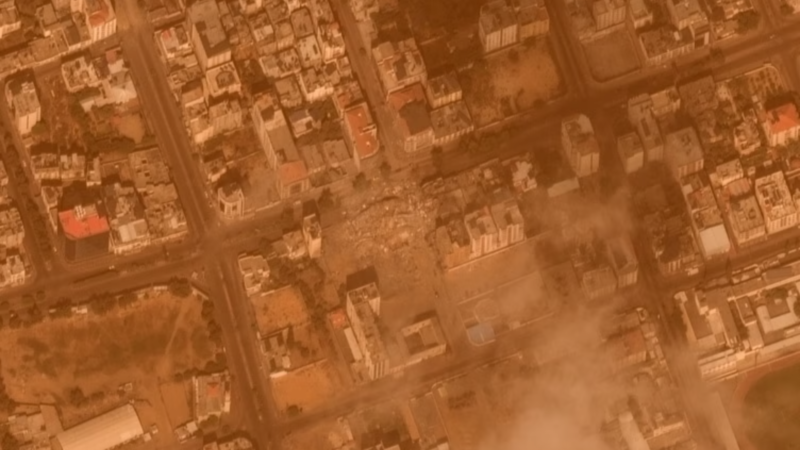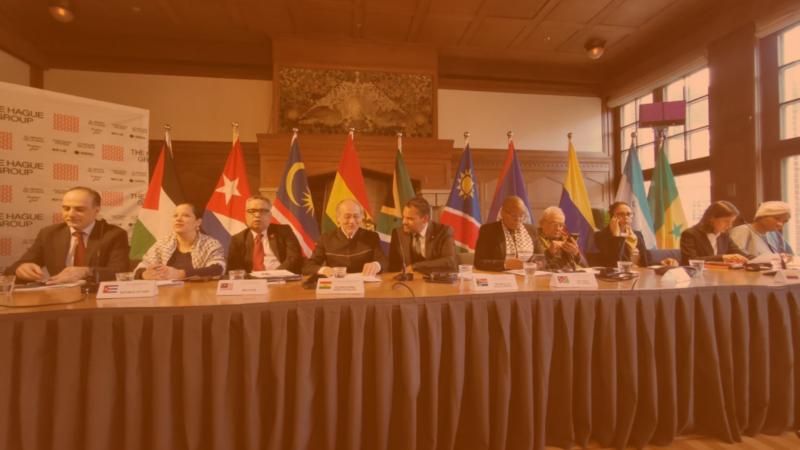An investigative deep dive into cartographic discrepancies and warzones
A new advent of Israeli psychological warfare has started to creep into the satellite ecosystem. Since the new Google Maps aerial update, numerous users have revisited the Gazan landscape for a post-war glimpse. Reddit has started to react to the images as well on multiple communities. Only with an accumulated anger and staggering sense of loss, would one be compelled to see what Israel left behind its genocidal project in Gaza. Buildings that were once local Gazan favorites turned into debris, preparing for something much more sinister.
As the aerial update accompanies the grief of the Arab world, on-ground units of the Israeli Defense Forces seem to be enjoying the liberty of Google Maps edits; turning war zones into video game fantasies.
It started with a curious tapping around on some buildings spotted as I zoomed in on “Gaza Strip”. The first dropped pin read منزل عائلة ابو حجر “Abu Hajar’s Family Home”. There was an absurd air to it; have families in Gaza always labelled their homes so publicly online? The buildings still appear intact, as opposed to a recent Damage Assessment Report conducted by the UNOSAT, which states 66% of buildings in Gaza being decimated. My suspicion deepened as I paid closer attention to the next detail: the location was categorized a “haunted house”. Happenstance? A technical bug?
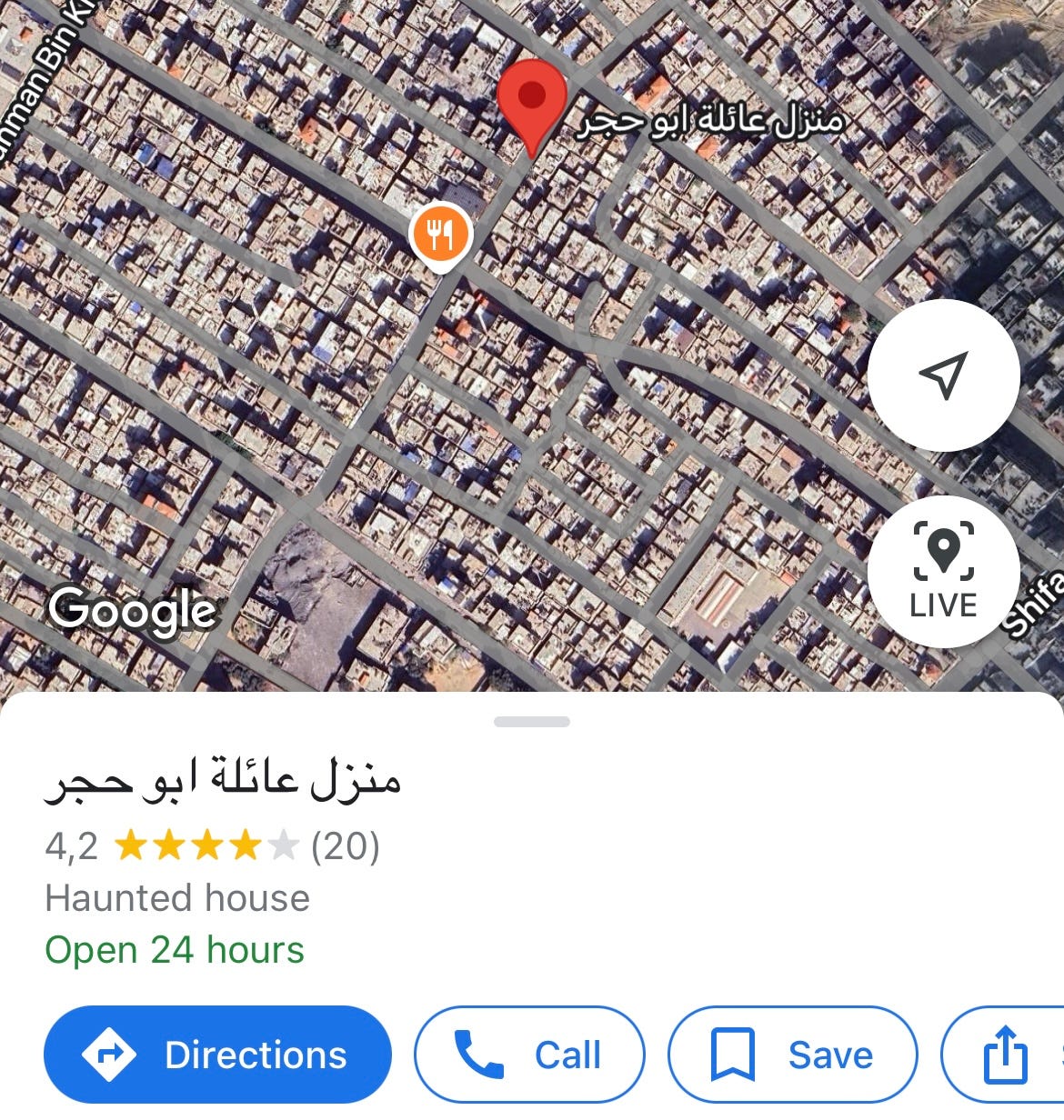
“Abu Hajar’s Family Home”, Al Shati Camp, Gaza Strip.
This can’t be.
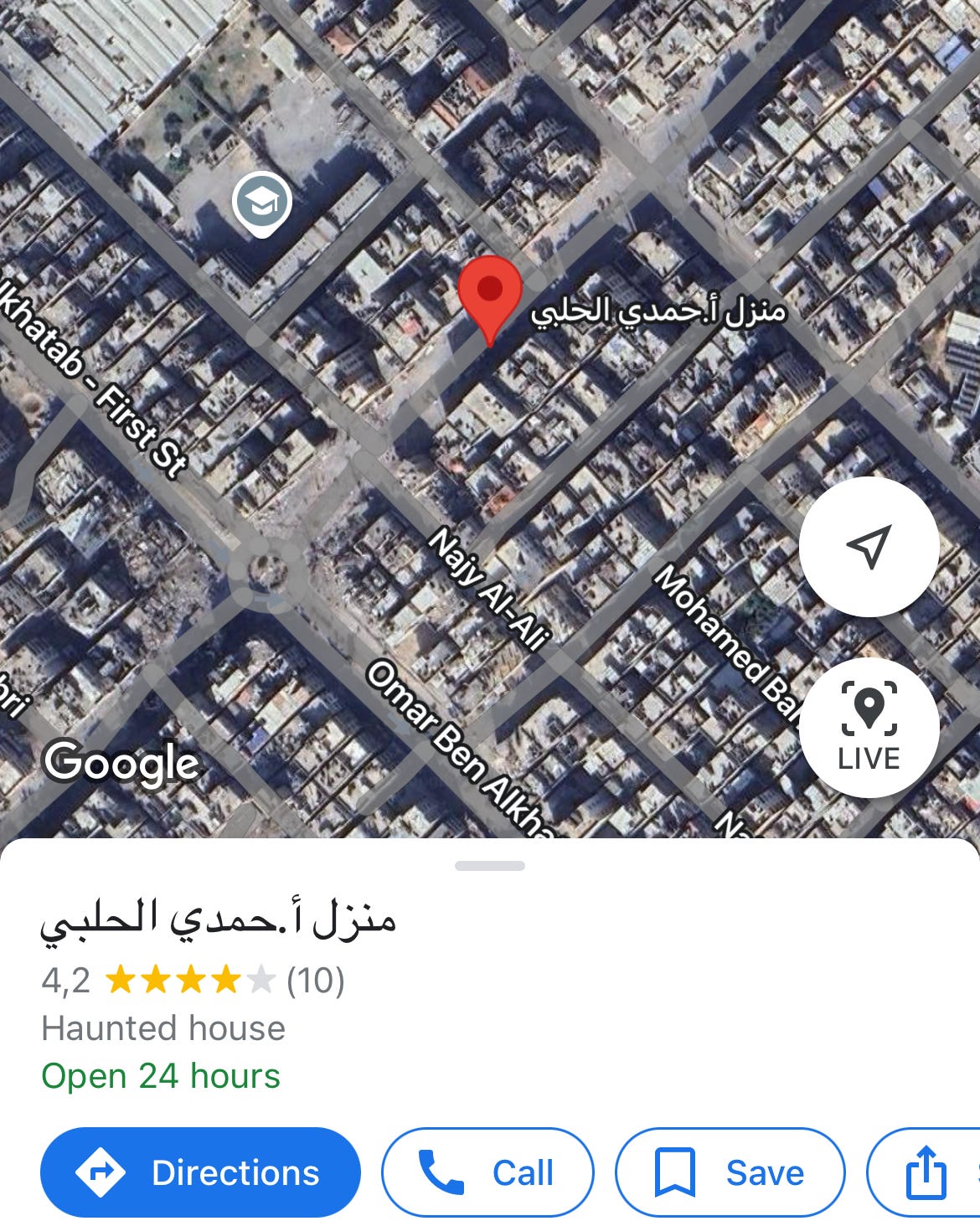
“A. Hamdi Halabi’s Home”, Jabalia, Gaza Strip.
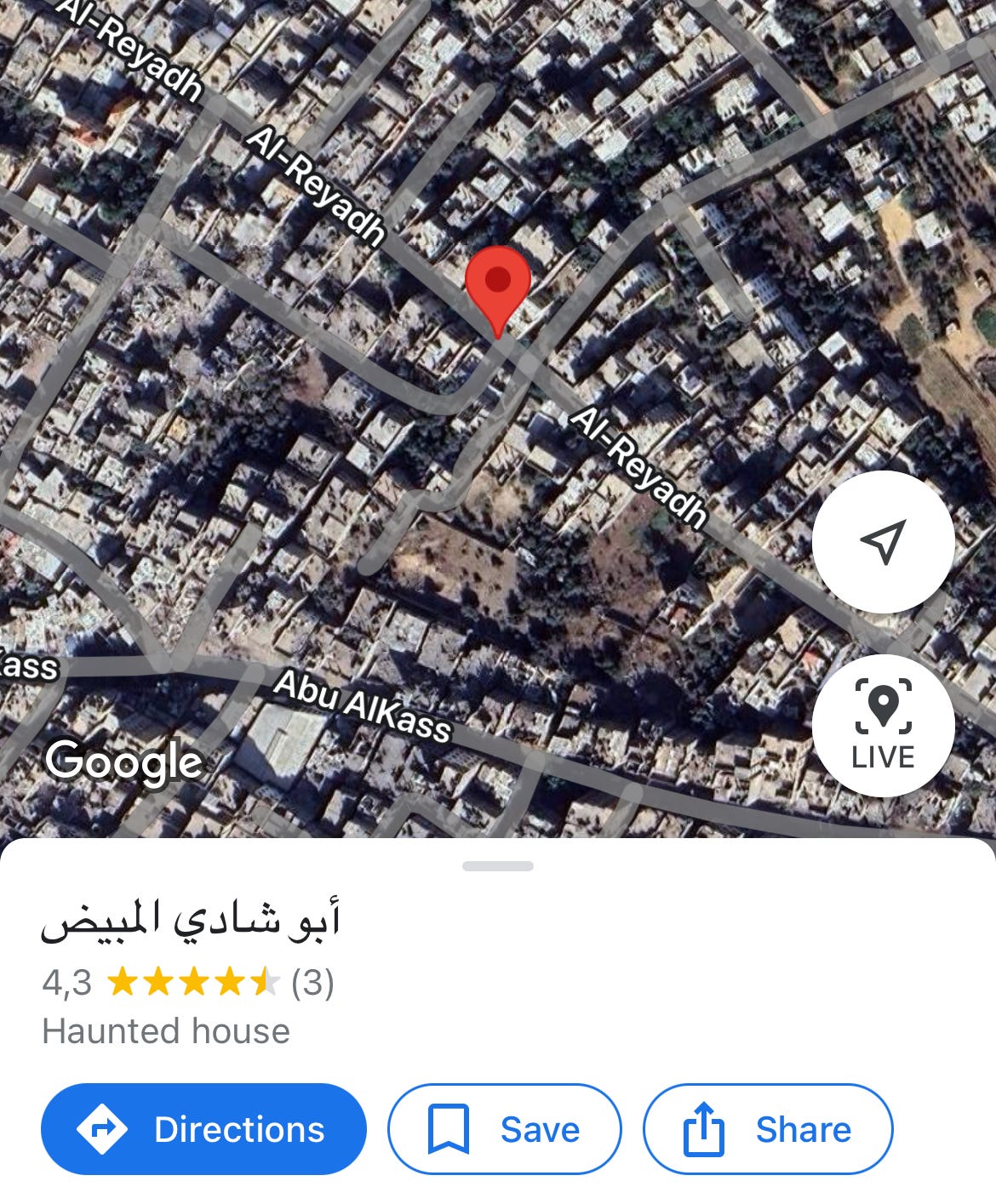
“Abo Shadi Al Mbyad”, Shejaiya, Gaza Strip.
At this last location in particular, some activity was tracked from a commenting follower – referred to here as “H”. H’s profile revealed another follower under the name “S”, whose profile was linked to another follower, anonymized here as “A”.

The profile was traced back to this finding of a person in military attire. Previously visited locations belonging to this account included the National Sports Complex in Kyiv; signaling the potential presence of Ukrainian participants on the ground in Gaza. Though not directly related, the discovery of such external profiles raises many questions on the reality of the war on Gaza.
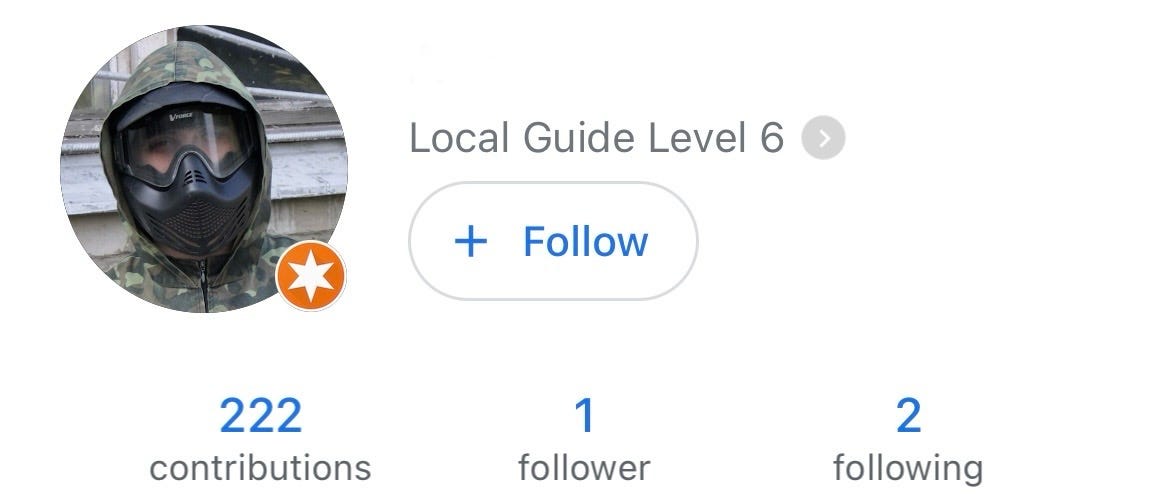
With Israeli soldiers being linked to such random locations, it is probable that the categorization of civilian infrastructure under “haunted house” is yet another twisted game played over the bodies of Palestinian families. Under a genocide, it is impossible to be bound by assuming the worst; but also acknowledging real practices carried out in a material manner. It is also beyond comprehension to imagine imported sadism infesting what was once home to multiple Palestinian generations. However, while these homes are labelled as “haunted houses”, their satellite images depict them without visible damage, perhaps hinting at the displacement of the families that once lived there.
Drawing parallels between various ongoing conflicts via satellite imagery has sparked an arena of discussions. Through a speculative piece published by FAZ in December 2023, Gregor Grosse questioned the role of Google Maps in suggesting military tactics to participating units in Gaza and some parts of Ukraine. Moreover, some satellite images from Mariupol have been retrieved by The Guardian only a year following the Russian attacks on Ukraine – with the destruction documented in greater detail and proportion.
On the other hand, another part of the satellite visual landscape starkly reflects the ongoing devastation in Gaza, capturing plumes of smoke rising from bombed-out buildings. At Al Ranteesi Hospital, the destruction is especially evident—the facility is marked as “temporarily closed,” surrounded by debris. It is likely that beneath the rubble lie victims who never made it inside for care, as the hospital itself is no longer operational.
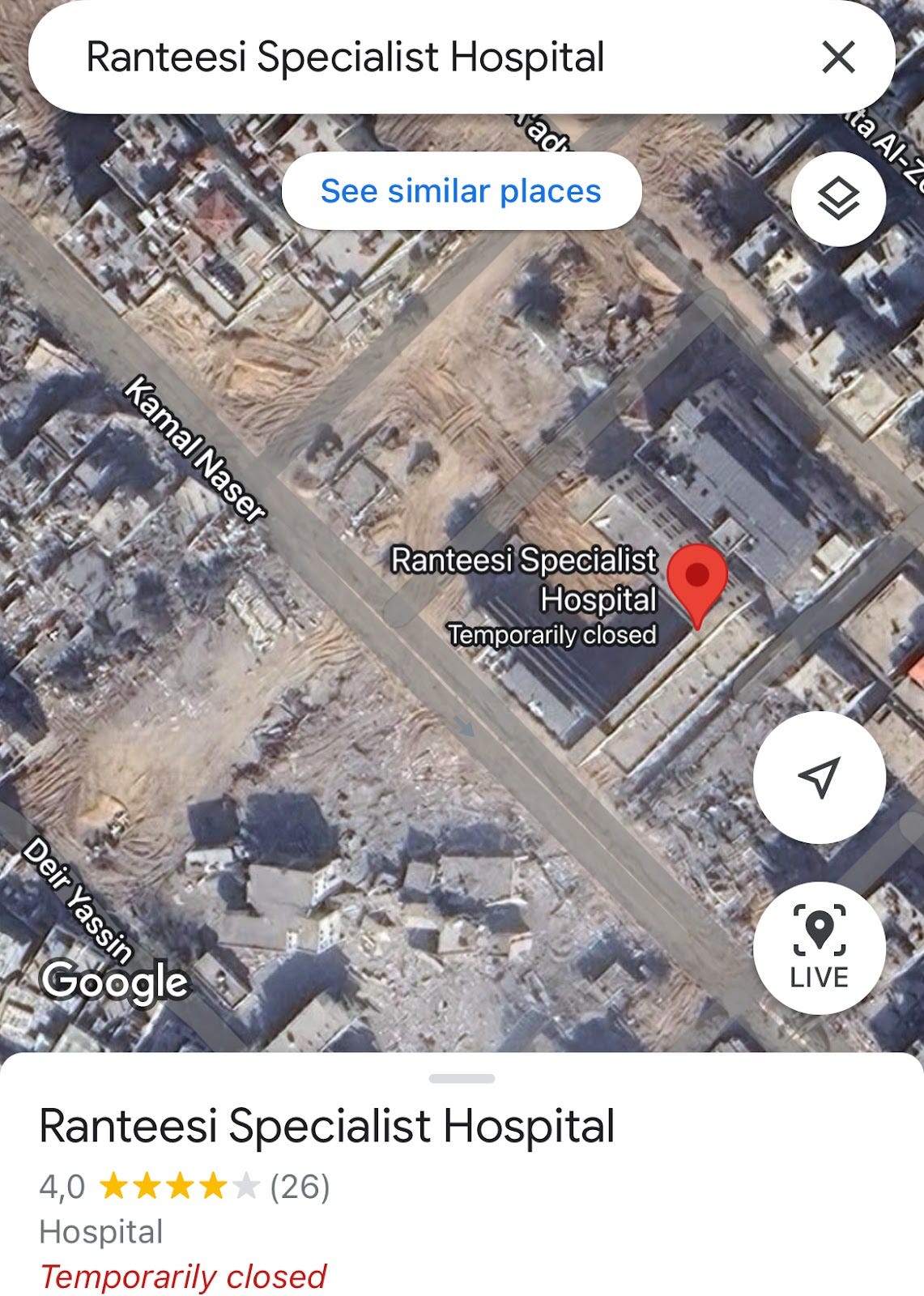
Moving to Al Awda Street, Al Balsam Hospital displays a similar scene, with rubble around its site – but showing an “open 24 hours” sign. Similarly is the case of Al Awda Hospital, which was besieged by the occupation forces during the early days of the war, and resumed its operations again as of May 2024, reported by the Institute of Palestine Studies and classified as “partially functional”.
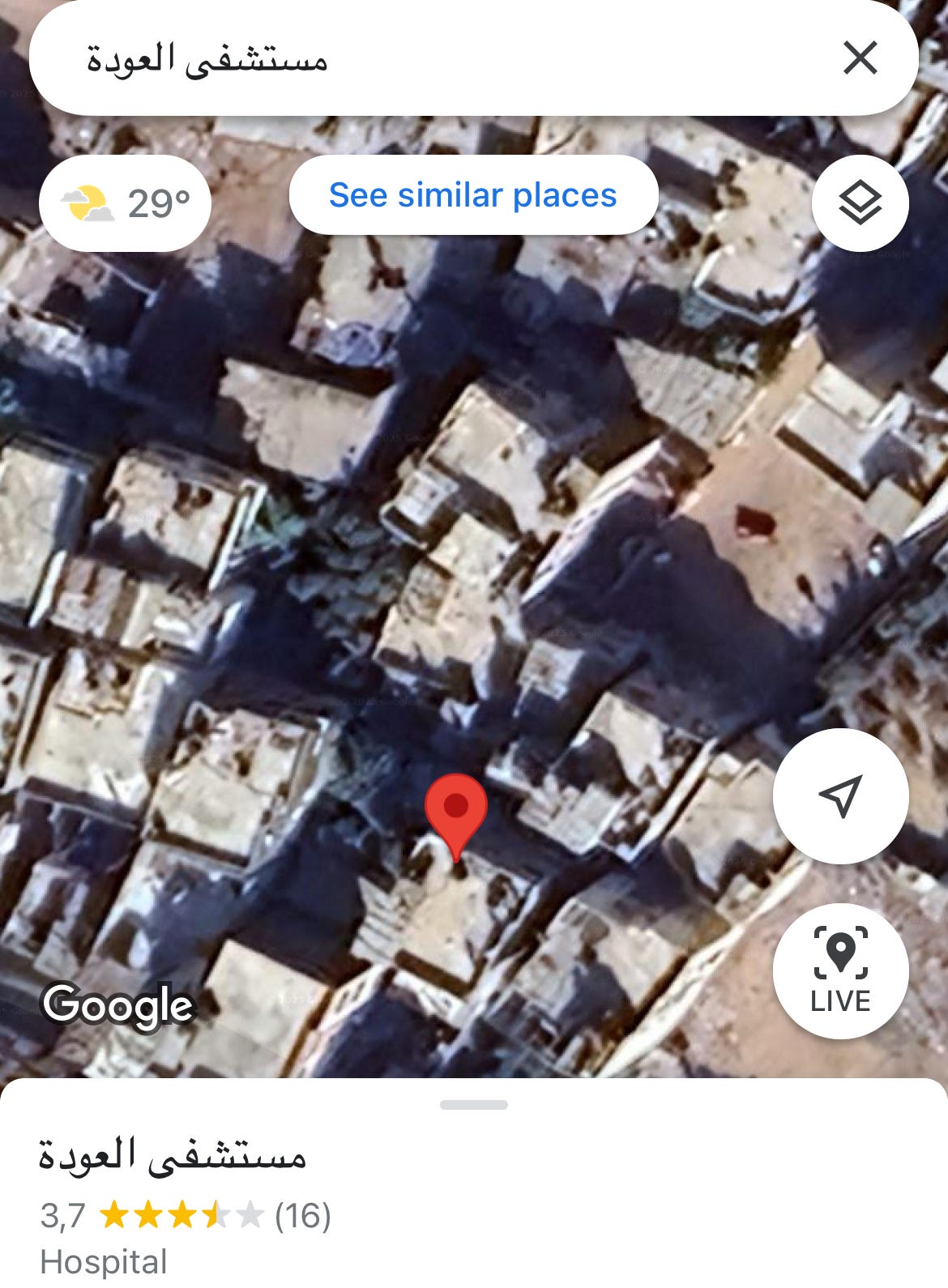
In contrast, Al Shifa Hospital – which was left completely in ruins after Israel withdrew its forces, appears completely functional on satellite.
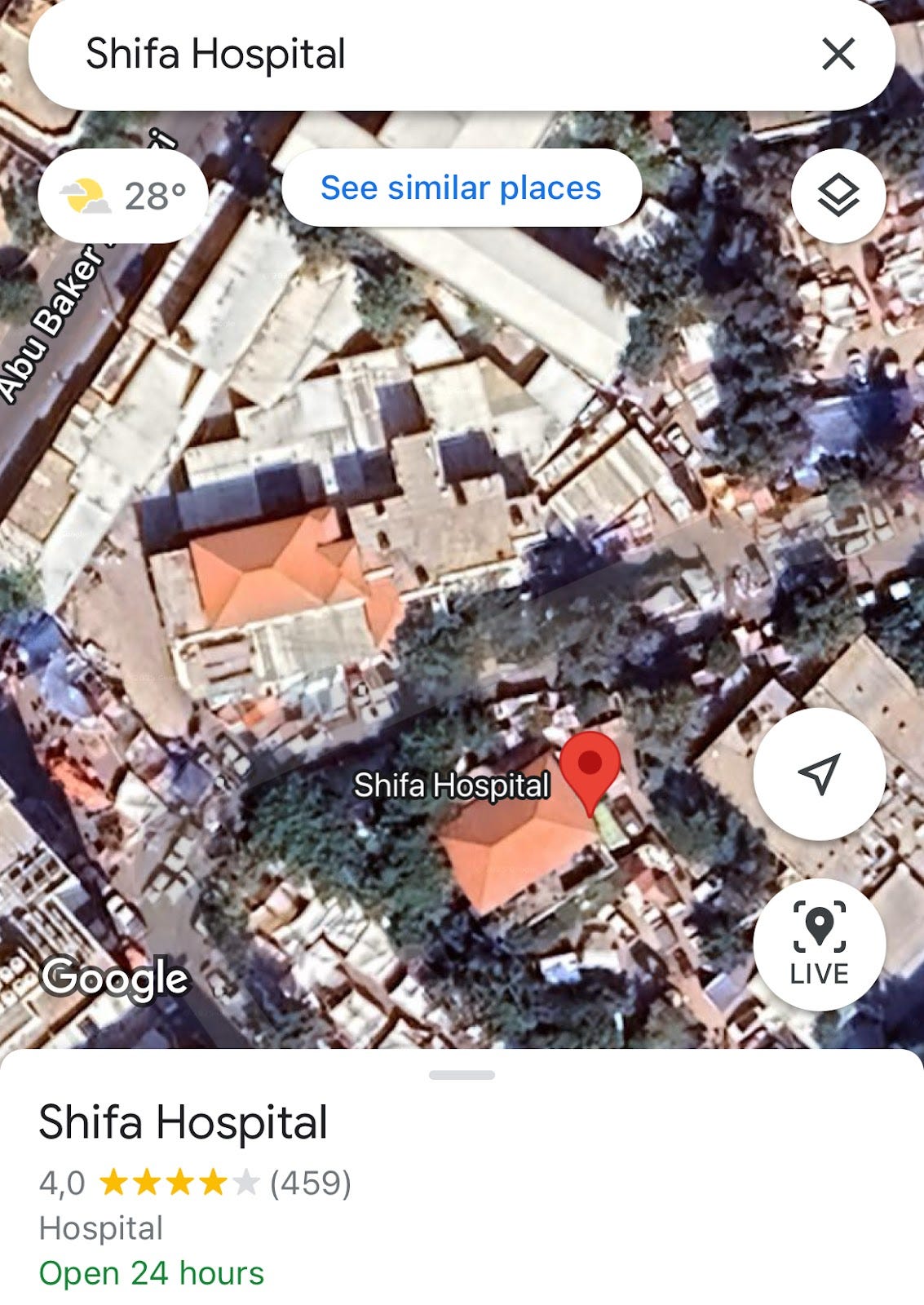
Whether such labellings and inequalities in cartographic documentation are intentional, is still a matter under investigation. Pioneers in this field of discovery include the works of infographic designer Marco Hernandez, who is currently working on visualizing the Ukrainian war and developing a system to help analyze the images from Gaza as well. The proliferation of such research underscores an urgency to critically envision a democratized future for evidence archival.
As colonial modern warfare festers into our geographical “cartosphere”, maps transgress into tools of violence and domination. Here, a collective obligation arises for the international civil community to critically reflect on the exploitation of cartographic authority in relation to technological hegemony and political complicity. Its extensions provide an expansive leeway for legitimizing occupation, strategizing it, and to be creative with it too.
This article was written by Zina Q on the Recollections substack.
Do you want to be informed of DiEM25's actions? Sign up here












